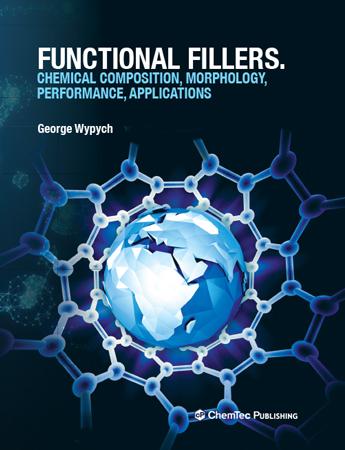Fillers do not fill but modify the next generation materials, control their properties, open new applications. This opening sentence underlines the aims of this book which shows applications of fillers resulting from their chemical composition (or modification) and/or special morphological features. This combination results in a high performance required by many new products.
The book has two sections: analysis of the chemical composition and morphology of classical fillers (some of the over 100 fillers listed in Handbook of Fillers, 4th Edition) which contributed to the exceptional enhancements in their properties and applications.
Presentation of new generations of fillers which provide designers with special properties not available so far from the classical fillers used by industry. Special groups of fillers discussed in this part of the book include, as follows
-
Structure
- Molecular (e.g., silsesquioxanes)
- Carbon dots
- Nano
- Nanowires
- Nanorods
- Nanosheets
- Nanodiamonds
- High aspect ratio
- Layered double hydroxides
- Functionalized
- Encapsulated
- Hybrid
-
Physical properties
- Superlight
- Dense
- Thermally insulating and conductive
- Thermal energy storage
-
Electrical and magnetic properties
- Conductive
- Insulating
- Insulating/conductive mixtures
- Dielectric
- Magnetic
- Magnetodielectric
- EMI shielding
- Microwave absorption
- Piezoresistive
- Electrostatic discharge prevention
-
Applications
- Lubricant
- Anti-corrosion
- Membrane
- Osteoconductive and other bone tissue engineering fillers
- Tissue fillers
- Antimicrobial
-
Renewable and recycling
- Biofillers
- Biosorbents
- Geopolymers
- Recycled materials
From the above list, it is pertinent that chemical modifications, structural features, enhanced physical properties, mixtures of fillers, electrical and magnetic properties, special applications corrosion resistance, medicine, dentistry, and antimicrobial, and fillers from renewable resources are the main topics of the book.
The expected audience, as in the case of Handbook of Fillers, includes most branches of chemical industry (and some other such as pharmaceutical, medicinal, electronics, etc.), considering that these products are common throughout the industry.




